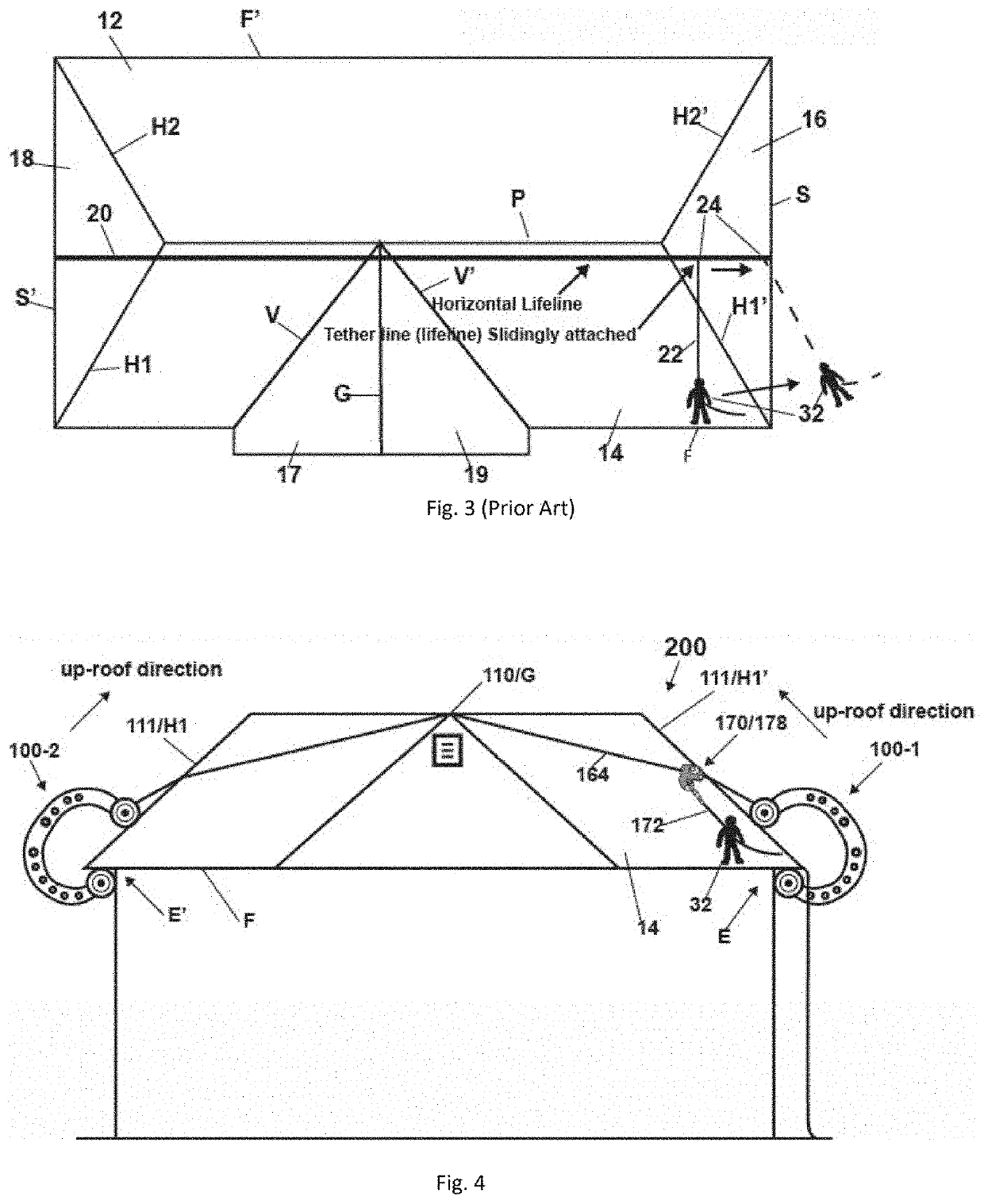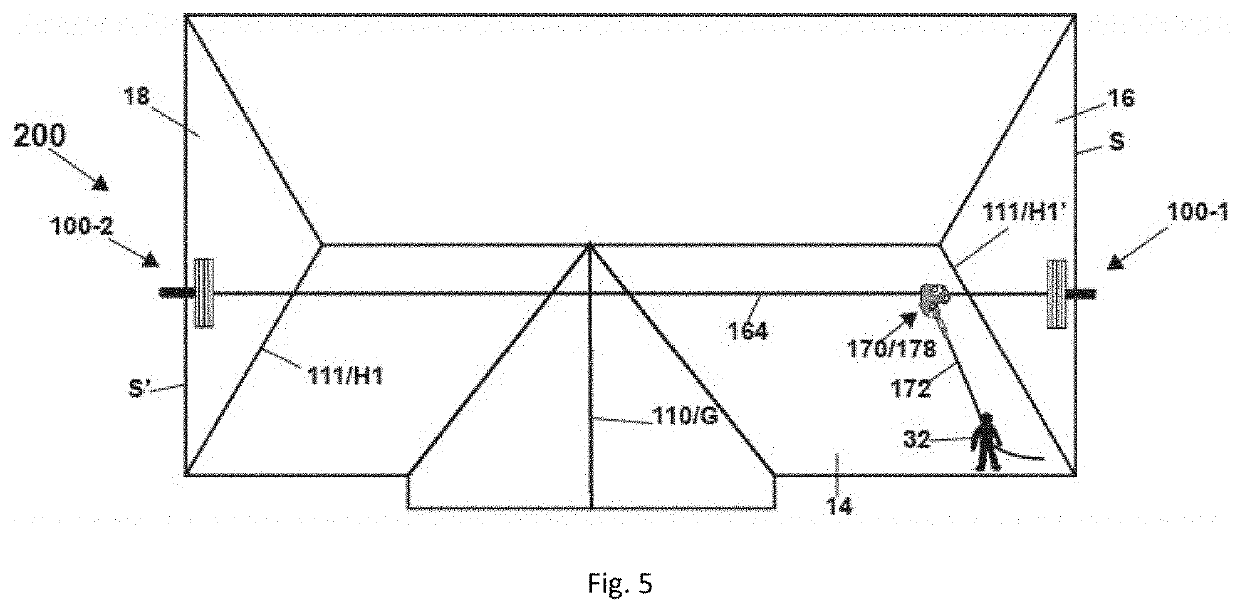Non-penetrating roof safety systems and methods of installation and use for sloped rooftops
a safety system and roof technology, applied in the direction of safety belts, construction, building materials handling, etc., can solve the problems of limiting the user's ability to access all areas of the roof surface, the repair of the hole, and the failure point of water intrusion into the roo
- Summary
- Abstract
- Description
- Claims
- Application Information
AI Technical Summary
Benefits of technology
Problems solved by technology
Method used
Image
Examples
Embodiment Construction
[0082]As used herein, portions of a roof structure are designated by certain letters, such as V for a valley, G for a gable ridge, H for a hip, P for a primary ridge, F for a front / rear edge, S for a side edge, and E for an eave. Any such letter including a prime indicator (e.g., left side edge S′ or rear edge F′) is intended to indicate a roof portion that is substantially opposite a similar roof portion without the prime indicator (e.g., right side edge S or front roof edge F). The description of various preferred embodiments of the invention in relation to such portions of the roof structure are not intended to be limiting. For example, a roof anchor 100-1 is primarily described herein as being installed on a right side edge S, but can also be installed on left side edge S′, front edge F, or rear edge F′. The references to the portions of the roof structure are only for ease of understanding the various preferred embodiments of roof safety systems according to the invention and h...
PUM
 Login to View More
Login to View More Abstract
Description
Claims
Application Information
 Login to View More
Login to View More - R&D
- Intellectual Property
- Life Sciences
- Materials
- Tech Scout
- Unparalleled Data Quality
- Higher Quality Content
- 60% Fewer Hallucinations
Browse by: Latest US Patents, China's latest patents, Technical Efficacy Thesaurus, Application Domain, Technology Topic, Popular Technical Reports.
© 2025 PatSnap. All rights reserved.Legal|Privacy policy|Modern Slavery Act Transparency Statement|Sitemap|About US| Contact US: help@patsnap.com



